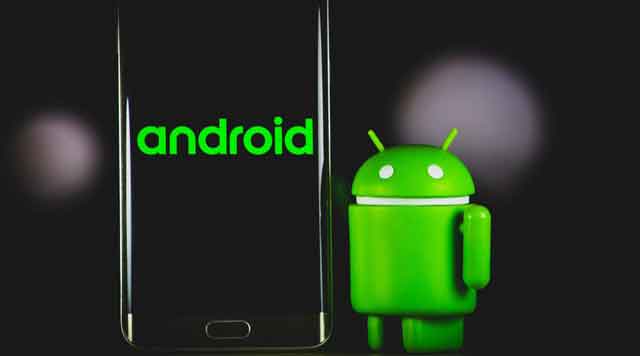Android History: All Android Versions List and Names
Currently, two mobile operating systems are actively used in our mobile devices i.e. Android OS, or iOS. But, amongst the two maximum people are Android OS users, and it isn’t that surprising as Android holds an 86% share of smartphone operating systems in the market. Every Android user in a span of 1 or 2 years gets news that a new Android OS version will be rolling in, in the next update. So why does Android keep updating the operating system, and what’s the history behind these updates. An important reason behind these updates is to allow its users to access all the latest features. Hence, since 2008, Android has come up with several updates, and the latest android version is Android 11.0 that was launched in September 2020. All these android version updates up to Android 9.0 are named after a dessert or sweet, but later on, this was changed. So, let’s check below all the android versions that have been introduced till now since its release.
Android 1.0
With no official code name, this was the first-ever android version released by Google on 28th September 2008. But, later on, this version was called Android Alpha. This version was launched with an Android Programming Interface 1 or API 1.
Android 1.1
In the next patch of android updates, Android 1.1 was released with no code names, which was later called Android Beta on February 9th, 2009. This version came up with some added features like third-party keyboard support, video recording, video playback, and copy-paste for the browser.
Android 1.5
The first-ever android version that was given an official nickname after a dessert i.e. Android Cupcake. This version of Android was soon released after Android 1.1 on April 27, 2009, with Android Programming Interface 3.
Android 1.6
It was the third Android version update of the year by Google as it was released on 15th September 2009. The fourth version of Android came up with API 4 and supported some added features such as CDMA technology, different screen sizes, and a battery usage indicator. This version was a special update as it had added some distinctive features, and it was named Android Donut.
Android 2.0
Soon after Android 1.6, Google released Android 2.0, which was the overall 5th and 4th update for the year. This update came up with an API level of 5 to 7 and some additional latest features like improved UI, Google search bar in the widgets, and supported HTML 5. Being the 5th Android update, its name started with E and named after a chocolate i.e. Android Eclairs. This update was rolled in on 26th October 2009.
Android 2.2
This version had a special release as it was revealed at the Google I/O 2010 conference. This version was a better-optimized version of Android 2.0 and was named Android Froyo. Users got the latest version update on May 20, 2010.
Android 2.3
Later on, in the same year on December 6, 2010, Android 2.3 was released, named Android Gingerbread, isn’t it delicious? The update was as delicious as the name, with the latest features like NFC support and VoIP calls. This android version was launched with API level 9 to 10 and was first rolled in in the Nexus S smartphone. This was the first device that came up with a stock Android OS.
Android 3.0
This was a massive update for large screen devices like tabs. With an API level 11, this version was released on February 22, 2011, and was officially nicknamed Android Honeycomb.
Android 4.0
Face unlocking was made possible with this update and it rolled in with API level 14 to 15. Named after a delicious dessert, Ice Cream Sandwich, this version was released on October 18, 2011. Moreover, this version offered a unified experience to all users including smartphones and tablets.
Android 4.1
The updated Android version Jelly Bean offered a smooth experience to users just like jelly. This version improved overall OS performance and came up with an API of 16 to 18. Android v4.1 was launched on July 9th, 2012 and it was the 10th overall update of Android OS.
Android 4.4
This was the next update that rolled in after the Android 4.1 version and it was named Android KitKat by Google. It offered a sweet experience to all the android users and especially to those devices with limited hardware capabilities. Moreover, this update came with API levels 19 to 20 and was launched on October 31, 2013.
Android 5.0
This was a massive update in a long time as it came with a redesigned UI and replaced Dalvik with Android RunTime. This update improved the application performances and battery optimization. Named after a sweet candy i.e. Android Lollipop, this update was introduced on November 12, 2014, with an API version of 20 to 22.
Android 6.0
With this Android update patch, the user’s privacy issues were completely sorted by introducing new permission architecture. Also, this included the support of a USB Type-C port and physical fingerprint sensor. This update was released with API 23 on October 5, 2015.
Android 7.0
Almost a year later on August 22, 2016, another android version was introduced i.e. Android 7.0 or Android Nougat. This update came up with better graphics rendering as it supported Vulkan API and also the app notification format was newly modified.
Android 8.0
This update can be the favorite one if we consider its name. This version of Android was named Android Oreo, and it was released on August 27, 2017. With this update, the Android Programming Interface or API level has risen to the next level i.e. 26-27. This was the first Android version that supported Bluetooth 5.0 and a wide color gamut.
Android 9
Android 9 or Android Pie was the last Android version that was nicknamed after a dessert. It was officially rolled in on August 6, 2018, with API 28. This version offered refreshed material design and navigation button styles were changed too.
Android 10
First modern Android update that wasn’t named after a dessert. Known as Android Q during development, this update was released on September 3, 2019. With API level 29, this android version introduced a complete full-screen user interface and also had a renovated navigation system.
Android 11
This is the latest Android version released on September 8, 2020. Most of the Android smartphones releasing now come up with this Android version. This android update is based on API 30 and has updated features like conversation notifications. Another feature that is added to this update is the built-in screen recorder.
ALSO READ: 6 Best Low MB Games for your PC
CONCLUSION
After the first official release of Android OS, Google has always focused on improving the user’s experience with this operating system. With each update, some problems have been resolved and some latest features have been added to the OS making life easier for the user. By now, Google has released 18 versions of Android OS and the operating system has come so far since its beginning. The last update was in 2020, which means another update is around the corner from Google.




